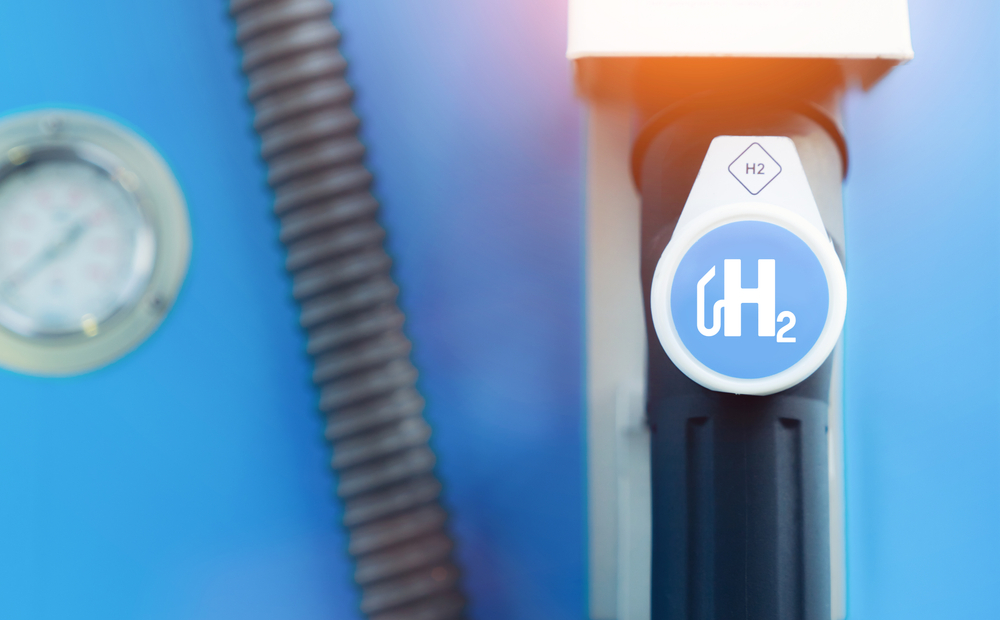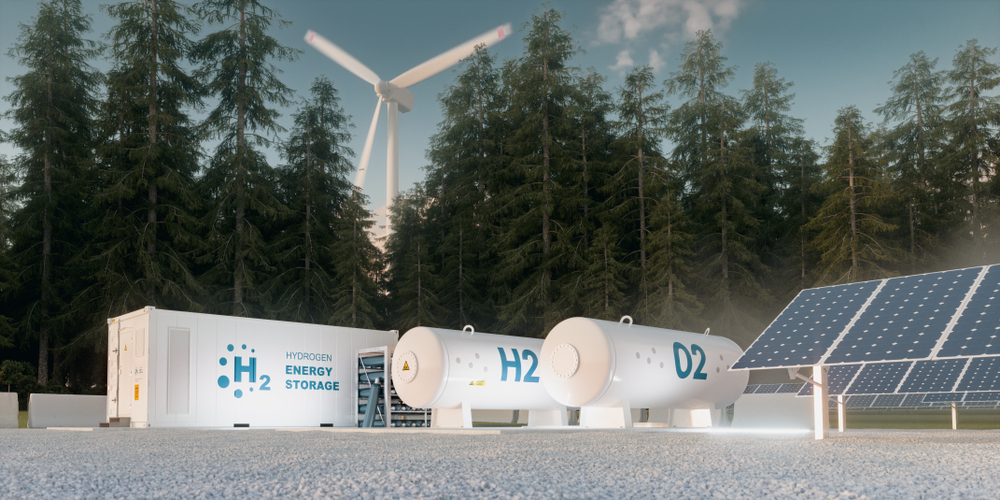With a growing project pipeline of named green hydrogen electrolyser capacity, the country is now the world’s second-largest owner of hydrogen projects after the Netherlands

Hydrogen is likely to play a crucial role in the clean energy transition in sectors such as transportation, buildings and power generation (Credit: Shutterstock/Alexander Kirch)
Low-carbon hydrogen could become a $50bn to $90bn export industry for Australia in 2050, says an analyst.
Energy researcher Wood Mackenzie highlights that the nation currently rates consistently in the top echelons for solar irradiance and has vast potential for large-scale carbon capture and storage (CCS).
Australia has also shown the world the path forward with its stationary battery storage flexibility at the much-vaunted Hornsdale power reserve facility in the Mid North region and has moved quickly to capitalise on low-carbon hydrogen production.
With a growing project pipeline, measured at 2.94 gigawatts (GW) of named green hydrogen electrolyser capacity as of 2020, the country is now the world’s second-largest owner of hydrogen projects after the Netherlands. Just this year alone, Australia’s pipeline of advanced and early-stage project developments has grown a further 45% to 4.25 GW.
Low-carbon hydrogen supply “becomes essential” in net-zero emissions world
Speaking at the Australian Petroleum Production and Exploration Association’s (APPEA) conference today (17 June), Prakash Sharma, Wood Mackenzie’s head of markets and transitions, said Australia’s key export markets – Japan, South Korea, China, India and Europe – are “large carbon emitters and net importers of natural resources”.
“Their import needs have steadily increased in the past two decades and now average at more than 70% of their total energy demand,” he added. “As these countries raise climate ambitions, they will need to source clean energy to decarbonise steel, chemicals, cement, heavy-duty mobility, shipping and power generation.”
In a net-zero emissions world, Sharma claims a stable and reliable source of low-carbon hydrogen supply “becomes essential” because it is “impossible to tell how a given molecule of hydrogen has been produced”.
“A guarantee of origin is therefore crucial to allow for minimal environmental impact, i.e., carbon leakage,” he added.
“Standards also help with risk assessment and transparent market pricing. Australia stands to benefit as rules of hydrogen shipping, transport, storage and product quality are set and accepted internationally.
“Australia’s share in the globally traded market for low-carbon hydrogen or its derivatives could reach 25-45 million tonnes (Mt) by 2050, equivalent to $50bn to $90bn in potential export revenue.”
Low-carbon hydrogen challenge is determining best transport method for export supply chains in Australia
Although cost-competitiveness continues to be a nagging point, Wood Mackenzie believes there are pathways to competitiveness for end-user segments. It said cost reductions will be mainly driven by large-scale, automated manufacturing of electrolysers, an increase in system size and a decline in renewable electricity costs.
But the challenge is determining the best transport method for Australia’s export supply chains. The energy researcher points out that all three forms of seaborne transportation under consideration, liquid hydrogen (LH2), liquid organic hydrogen carriers (LOHC) and ammonia (NH3) have advantages and also challenges.

The effective carrier choice depends on the end-use, purity and storage requirements. For example, LH2 is preferred if the end-use requires liquid or high-purity hydrogen such as mobility applications, said Wood Mackenzie.
On the other hand, it highlights that ammonia gains where it can be used directly as a feedstock avoiding the cost of cracking NH3 back into hydrogen.
“Our proprietary hydrogen costing and energy transition scenario modelling show Australia’s hydrogen delivered costs can fall below $2 per kg longer-term, making it competitive in all end-use cases in key markets of northeast Asia,” said Sharma.
“We estimate ammonia would be the first hydrogen-carrier in the export market facilitated by Australia from the mid-2020s. Low-carbon hydrogen demand in Japan and Korea reaches 30 Mt in 2050 with ammonia taking one-third market share on this route.”
Success for Australia depends on the speed and scale that the global hydrogen market develops
Although there is no exploration risk to green hydrogen production, the export supply chain – storage, compression, transport, decompression – is currently complicated and nascent.
Wood Mackenzie claims the size of the prize for Australia depends on the speed and scale that the global hydrogen market develops – and notes that the range is wide at between 73–145 Mt in 2050.
“We believe Australia can overcome hydrogen’s logistical challenge like it successfully did in coal seam gas to LNG projects, automated trucks and remote-control mining operations and large-scale CCS deployments,” said Sharma.
“Leveraging experience from hydrogen pilot programmes and greater investment in research and development, consistent government support, partnerships and offtake agreements from Japanese and Korean firms would be crucial.
“This is a lifetime opportunity for Australia to harness its renewable energy resources and become a dominant player in the zero-carbon energy trade. It would be difficult for large Asian economies to reach climate goals without clean energy supplies from Australia.”
